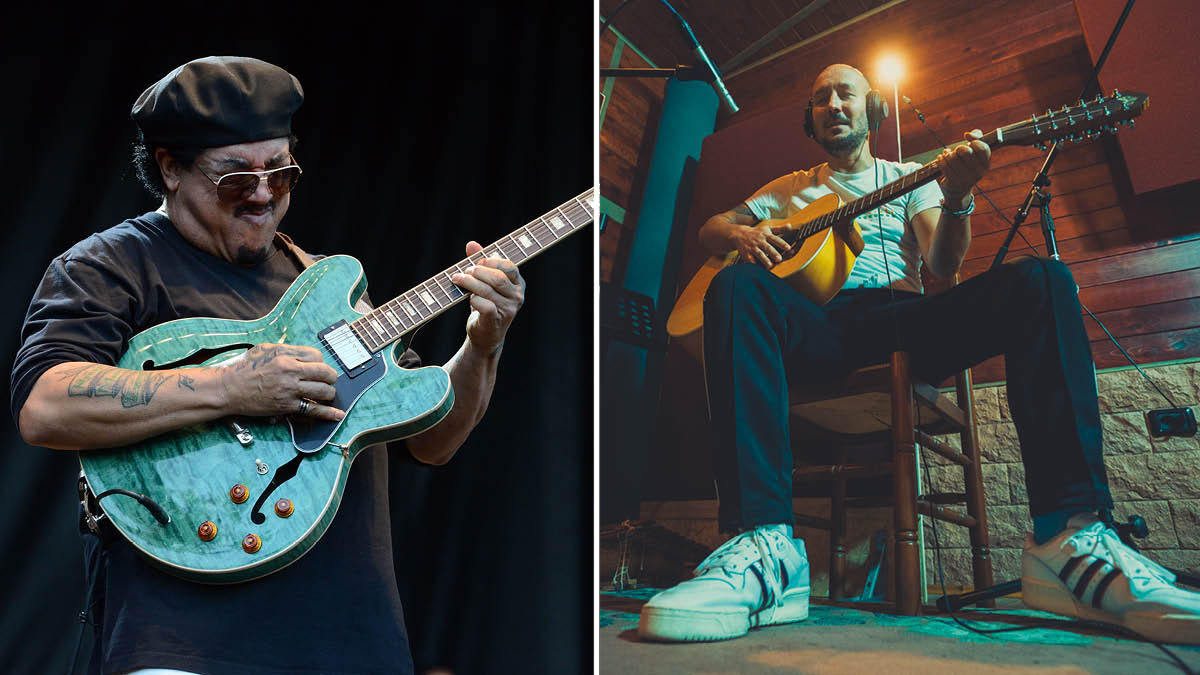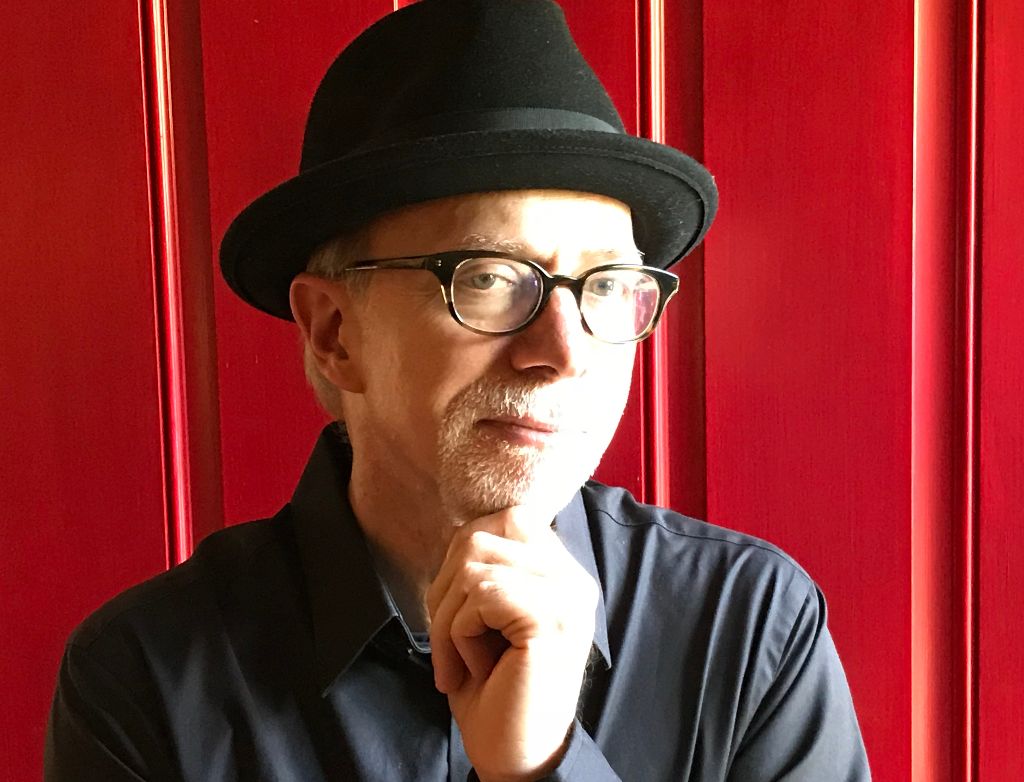Leo Nocentelli and Farees on the far-reaching influence of Jimi Hendrix and recording with $50 amps

Neo-funk producer, spoken-word artist and multi-instrumentalist Farees makes music that defies easy categorization. On his 2015 debut album, Mississippi to Sahara, he incorporated an Assouf guitar style to pay tribute to both his Tuareg heritage and the music of Delta blues.
His 2020 album, Border Patrol, was an eclectic 17-song social-political epic that mixed walloping rock riffs with elements of hip-hop, soul, blues and funk.
His newest release, the six-song EP Blindsight, is another fascinating – and thought-provoking – musical journey. Built around his self-described “wall of groove” production style, Farees addresses “fake revolutionaries” and the so-called cancel culture with Stevie Wonder-esque exuberance on Bad Apples, and he celebrates the social movements of yesteryear on the blissed-out gem Wistful.
There are, of course, ample doses of guitar goodness throughout, most notably on a trippy cover of Jimi Hendrix’s Hey Joe, which sees Farees laying down fierce, wah-soaked rhythms before heading to the outer limits with a turbo-charged solo. And on the widescreen funk masterpiece The Melting, he’s joined by Meters guitar legend Leo Nocentelli, who joyously weaves a colorful quilt of intricate six-string textures.
Nocentelli notes that he was surprised by Farees’ out-of-the-blue invitation to play on the track.
“I really didn’t know too much about Farees,” he says. “I’d heard a few things of his and liked them. He sent me the files and I worked on them. It was really cool. Pretty soon, we got to talking and we found out that we had a lot in common. We knew a lot of the same music and even some of the same people. It was a magical thing. It became more than a musical collaboration; it was a mental connection.”
For Farees, asking Nocentelli to play on The Melting was something of a no-brainer. “I’m a huge Meters fan, so that makes me a big Leo fan,” he says. “He’s a legend, a superstar and an innovator. It’s been really awesome to be able to play with him and get to know him. In a very short time, I’ve learned so much from him. This has been such a great experience. This is more than music or business. Our connection goes deep.”
Get The Pick Newsletter
All the latest guitar news, interviews, lessons, reviews, deals and more, direct to your inbox!
Leo, you’ve guested on a lot of artists’ records over the years. What was it about Farees that impressed you musically?
Leo Nocentelli: “Number one, his music was different, abstract. I like that kind of challenge to be able to perform music that isn’t straight I-IV-V chord changes or the straight 2/4 beat. This particular track involved a lot of different time signatures, and that spoke to me. Plus, there were the vocals and the groove, and the percussion sounded African. As I’m part of an African background, that also attracted me.”
Farees: “Leo and I both have African ancestors. We have the same idea of rhythm in general – groove. We feel the importance of having something rhythmically solid so that you can put vocals on top of it. We’re very similar in our musical philosophy, and rhythm is huge to both of us.”
We’re very similar in our musical philosophy, and rhythm is huge to both of us
Farees
Farees, when you sent Leo the files for The Melting, did you give him any kind of direction?
Farees: “Not at all. There was no need to. I always go by instinct when it comes to music, and I knew Leo would come up with incredible ideas. The only thing I knew I wanted was Leo.”
Nocentelli: “He didn’t tell me anything. He just let me do my thing. Farees knew I could make the track fly. I just tried to pick some spots in it where I could do some guitar parts that lifted the track up. All I really want to do is make something better.
“I mean, sure, I can solo and rock out with the best of them, but what I’ve always been proud of is how I can listen to a track and know what to put on it. There’s nobody on two legs who can do what I do. That might sound egotistical, but it’s the truth.”
Farees, you do an inventive cover of Hendrix’s Hey Joe on the record. Any trepidation about reworking such an iconic song?
Farees: “Of course. But Hendrix feels like home to me. At the same time, you can hear some Meters on my version. I didn’t want to do a straight-up Hendrix interpretation, so I tried to mix things up. There’s some Leo influence in the track.”
Nocentelli: “See, when I hear that, it’s a big honor. I hear a lot of Hendrix and me going on there – it’s in Farees’ playing. He and I are on the same page. We have the same musical vibe. I think he and I knew each other for a long time, way before we even had a conversation.”
Everybody got something from Hendrix. There isn’t a guitar player around who hasn’t learned from him
Leo Nocentelli
Farees, I was wondering if you could expand on Hendrix a bit more. You once called him your “preeminent guitar and music teacher.”
Farees: “Exactly. Growing up, I played a lot of instruments – flute, percussion, bass and drums – but then I heard Jimi Hendrix, and I got into the guitar. That’s when I said, ‘OK, I want to play this thing because it sings!’ Jimi’s guitar playing connected with my soul; it was a healing sound. So when I started learning to play, I called him my guitar teacher as a joke. I’m self-taught in the basics. I don’t know scales or notes. I just play by ear. Listening to Hendrix opened up my ears in so many ways.
Nocentelli: “Everybody got something from Hendrix. There isn’t a guitar player around who hasn’t learned from him.”
Lyrically, Blindsight offers a lot to chew on. Farees, you’ve never shied away from socio-political topics.
Farees: “Music is the most powerful tool we have for bringing about change, all kinds of change – societal, political and even within the music industry. We need more truth and less fake-ass so-called revolutionaries. Even with artists, I think we’re in a new era.
“It’s not enough to be able to play good guitar or keyboards if you’re a bigot, or if you’re ignorant. More and more, I think people will realize that the person and the spirit behind the music matters.”
Nocentelli: “I agree with Farees. Music has always created change, and it’s the perfect vehicle for anybody who doesn’t have the power otherwise. I’ve tried to do that throughout my career writing for the Meters. Years ago, I wrote A Message from the Meters. I voice myself through music. Always.”
Speaking of the Meters, Farees, I understand you’re working on covers of Meters songs. Is that right?
Farees: “That’s right. I was in the studio today, actually, recording Loving You Is on My Mind and Find Yourself by the Meters.”
I assume Leo is going to be on those tracks.
Nocentelli: “I don’t know…”
Farees: “Who knows? Who knows?”
Wait… wouldn’t that be a little strange if he wasn’t?
Nocentelli: “Well, Farees has a new album out now, and it takes time to develop another one. You can’t just record stuff and say, ‘I’m going to use this person. I’m going to use that person.’ You might want a different sound or a different feeling. I would probably do it, but it all depends on what the tracks sound like and what they need.”
Farees: “For me, it was more like, ‘Let’s not bother Leo again.’ I wanted to pay homage to him and the Meters.”
Nocentelli: “In other words, you wanted me to beg you. ‘Please, Farees. I’ve got to play on this, man. Please, let me play!’”[Laughs]
Farees: “No, no. Oh, no… [Laughs]”
Leo, which guitar did you use on The Melting?
Nocentelli: “I’m pretty sure I used my signature Gibson 335. That’s pretty much my main guitar, although I do use other models, depending on the situation. When you’re in the studio, some records demand certain sounds, and it might not always be a 335. Sometimes it’s a Strat or Tele sound, so I use whatever I need to get the point across.”
I love copies and inexpensive guitars, but I turn them out. I change their pickups and circuits, and they become weapons
Farees
Farees, what kinds of guitars did you use on the record?
Farees: “I usually play Squiers, Grecos or Tokais. I love copies and inexpensive guitars, but I turn them out. I change their pickups and circuits, and they become weapons. I don’t go in for the big brands; I’m more of a do-it-yourself kind of guy.
“That way, you get a sound that’s more individualistic. If you listen to my sound on Hey Joe, you can hear what I’m talking about. I recorded that guitar on a small practice amp called a Pathfinder. It’s, like, $50. That’s all you need sometimes.”
- The Blindsight is out now on Rez'Arts Prod.
Joe is a freelance journalist who has, over the past few decades, interviewed hundreds of guitarists for Guitar World, Guitar Player, MusicRadar and Classic Rock. He is also a former editor of Guitar World, contributing writer for Guitar Aficionado and VP of A&R for Island Records. He’s an enthusiastic guitarist, but he’s nowhere near the likes of the people he interviews. Surprisingly, his skills are more suited to the drums. If you need a drummer for your Beatles tribute band, look him up.








![[from left] George Harrison with his Gretsch Country Gentleman, Norman Harris of Norman's Rare Guitars holds a gold-top Les Paul, John Fogerty with his legendary 1969 Rickenbacker](https://cdn.mos.cms.futurecdn.net/TuH3nuhn9etqjdn5sy4ntW.jpg)






